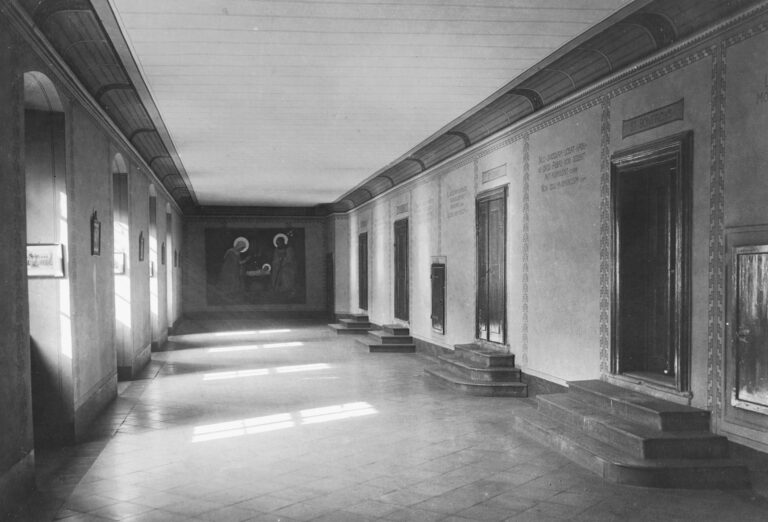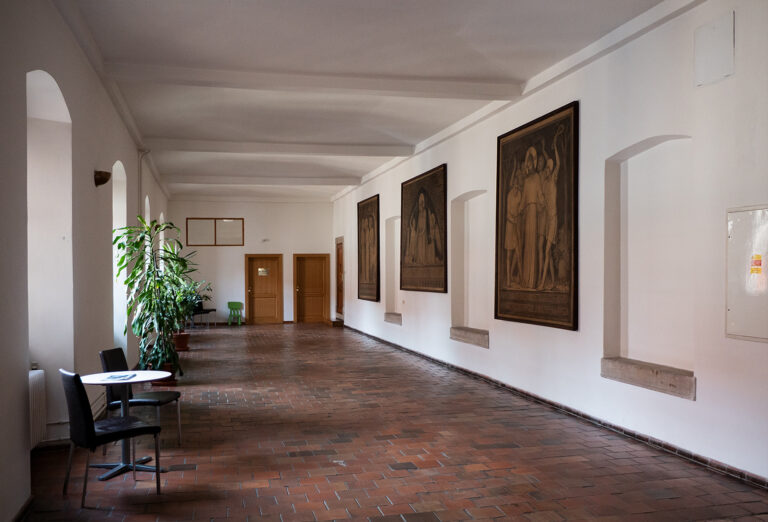Life according to the Rule
Ut in omnibus glorificetur Deus ("That in all things God may be glorified")
…in short U.I.O.G.D., is the basic mission of Benedictine spirituality. It means seeking God and glorifying Him in everything that belongs to everyday life.
The day of a Benedictine monk is purposefully divided between prayer and work, according to the traditional Benedictine motto Ora et labora (“Pray and Work”).
Manual work, compassion for the needy, prayer, the Holy Scripture reading (lectio divina – a certain methodical way of contemplative Bible reading) and life of quiet world detachment are inextricably linked with monastic life from its beginnings. Prayer is the most fundamental spiritual activity in which the alert awareness of God’s presence grows. All forms of monastic prayer, communal and personal, center on the Word of the Bible. Scripture represented both the source and the context of early monastic prayer. Ancient monks were completely immersed in the Scripture words and images. They diligently read the Scripture, had the Scripture read to them, and learned long portions by heart. The Benedictine rule honors the principle: “Let nothing take precedence over the service to God.” To value common prayer is one of the Benedictine charism. Everything that takes place within this common choral prayer is called opus Dei (“Work of God, Service of God”) in the Benedictine tradition.
/Freely quoted from Blanka Hlaváčková’s diploma thesis The Benedictine Rule for the laity or becoming an oblate, Prague 2011/
A day at the monastery
Monastic life has always had its regular rhythm. The ideal of constant prayer during the day included in the Rule of Saint Benedict is reflected in the daily schedule, which includes communal and private prayers as an expression of the will "time alone with God".
Let's look at the testimony of the day in the Emmaus Monastery, as it looked like in the 1930s. The schedule was remembered by Br. Norbert Tureček OSB, born in 1906.
4.00 Wake-up call
4.20 Praises – morning prayers, during which the brothers recited the Lord’s Prayer many times
5.00 Mass for the brothers – at the Virgin Mary’s aisle
9.00 Convent mass – sung on feast days
Breakfast was served separately with cereal coffee, milk, dry bread, and sweet bread on Sunday. In the morning the priests helped the sisters sell vegetables to people in the garden.
11.45 Hora media – communal prayer recited by priests in the middle of the day
12.00 Lunch – brothers sat in the middle, fathers at the walls of the refectory. There was always reading at lunch, the abbot began the prayer and the fathers and brothers continued reading.
After lunch, the procession went to the Imperial Chapel to read Psalm 50. It was followed by approx. 30 minutes of rest, spent separately by the fathers and brothers, indoors during winter and in the garden in the summer.
13.30 Work
16.00 Snack – coffee and bread were served.
The Rosary prayer took place in the kitchen during winter and in the garden in the summer.
Vespers (evening prayers) were prayed by each brother alone, sometimes even while working.
How the Benedictines lived
Benedictines were housed in the individual cells bearing the names of saints, and the walls between them were decorated with quotations from the Rule. As an example, we present the very first, the most readable, which proclaims: "They may not possess anything that the abbot does not give or allow them." (Ch. 33 Private property of monks).
...you can travel back through time by swiping
...you can travel back through time by swiping
 HISTORY
HISTORY
 PRESENT
PRESENT
Other monastery tasks
The monastic life does not only mean commitment to God, although it always comes first. The nature of monastic life also implies the tasks that the monastery fulfills in relation to society. Reading and study of Scripture can be extended to more general issues of education and science, compassion for the needy may develop into charitable activity, the search for means to glorify God can result in a predilection for art.
After the Emmaus Monastery was founded, its primarily task was to spread education. It was done through the acquisition, copying and translation of books. The medieval monastery library featured mainly biblical, liturgical and linguistic books, written in Glagolitic in Old Church Slavonic and Czech languages. Also, some abbots and conventuals of the Utraquist and Montserrat periods were personalities of scientific and intellectual life. In 1812, the Emmaus Benedictines were offered the administration of the newly founded gymnasium in Klatovy. They had to give it up after the introduction of the new education law in 1871. The Beuron Congregation turned its attention to the very restoration of the fundamental principles of monastic life. In addition to their interest in the liturgical study and medieval Gregorian chant, the Beuron Benedictines attempted to create a total work of sacral art that would encompass fine art, sculpture, architecture, and arts and crafts. They called their art "liturgical". After World War I, reflections on the depth of faith shared through the liturgy were popularized in the PAX magazine, published in Emmaus from 1926–1939. This interest continues to some extent even today in the form of the traditional rite Latin masses or sung choral vespers, also in Latin.


